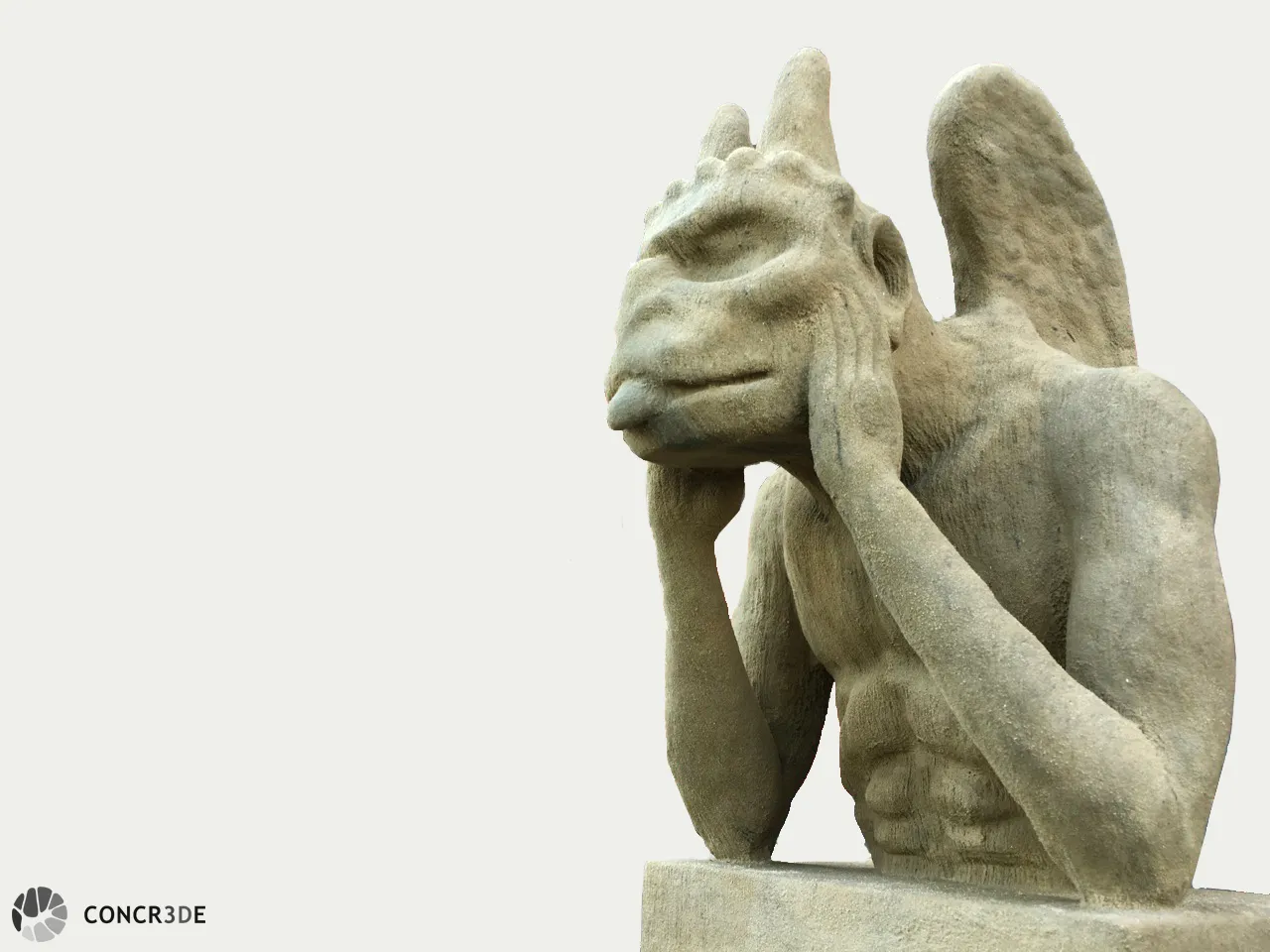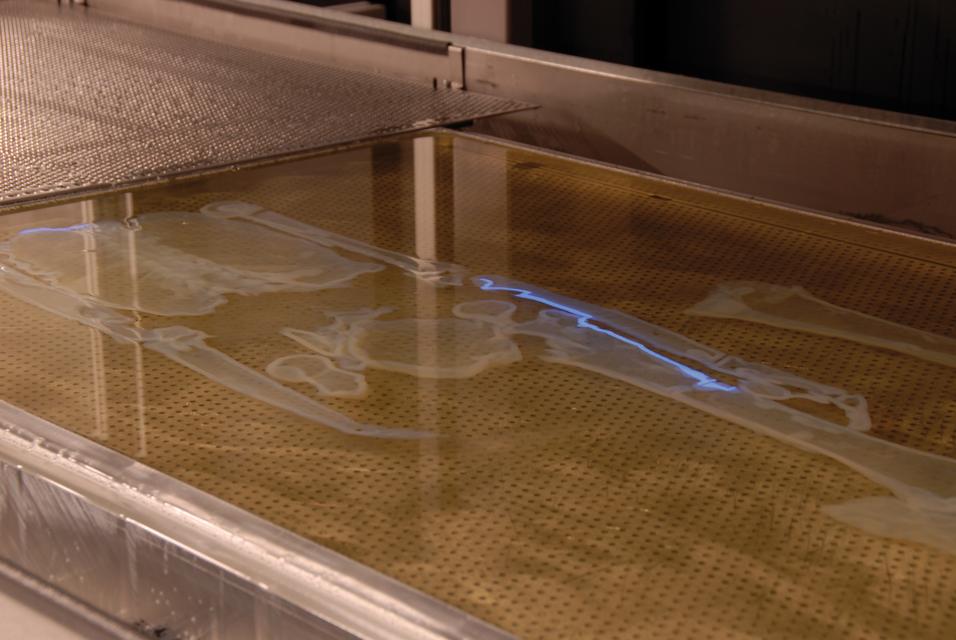Over the past decade, 3D printing and scanning have significantly influenced archaeology, providing new insights into historical research and artifact preservation. These technologies have not only unlocked new ways to explore and understand our past but also allowed us to interact with history in a hands-on manner. From reconstructions of artifacts to immersive models of ancient architecture, 3D advances have opened up new ways to explore our past. For example, today, museum goers can grasp a piece of ancient Rome or a fragment of a Pharaoh’s tomb in their hands. Today, it’s not just about preserving history anymore; it’s about making it tangible and breathing new life into ancient stories. Here are five of the most captivating 3D printing feats in archaeology over the last ten years.
Reviving the Bull
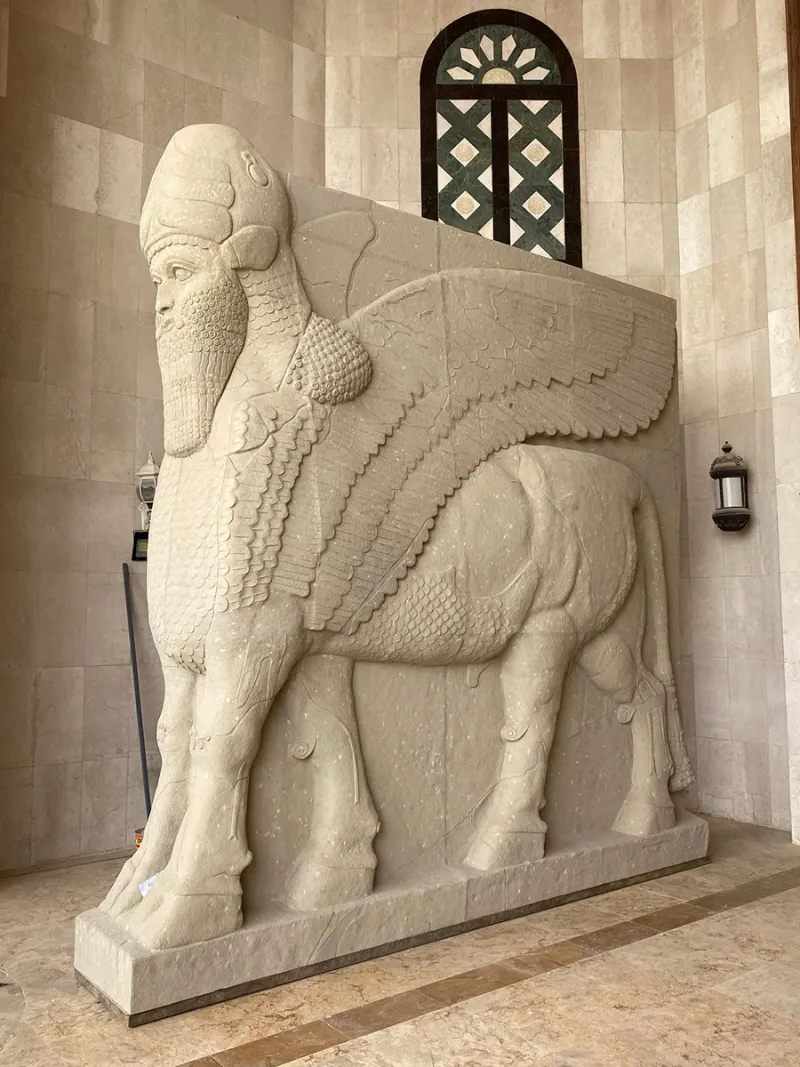
The 3D printing of the Bull of Nimrud at the Basra Museum. Image courtesy of the Institute of European Democrats.
In 2024, Italy gave Iraq its 3D printed copy of the Bull of Nimrud, an ancient Assyrian statue made in the 9th century BC that was destroyed by ISIS in 2015. Following the attack, a team of restorers led by Florence-based expert Nicola Salvioli studied photos and videos to make a model in polystyrene and then created a full-size replica using 3D printing and fiberglass. This replica, coated with stone dust to look more like the original, was displayed at the Colosseum in Rome and the Unesco headquarters in Paris before being placed at the Basrah Museum’s entrance. This gift to Iraq proves the power of using 3D printing to bring back lost cultural treasures.

Remains of the Bull of Nimrud after ISIS destroyed it in 2015. Image courtesy of the Institute of European Democrats.
Gothic Rebirth
After the devastating fire that ruined Notre Dame in 2019, CONCR3DE, an expert in stone 3D printing, suggested using the cathedral’s rubble and ash to create a new 3D printable powder. This blend would carry the essence of the original Parisian limestone, extracted from underground quarries dug beneath Paris’s fifth and twelfth arrondissements in the twelfth century. To demonstrate the potential of their technology, CONCR3DE 3D printed “Le Stryge” (also known as “The Vampire”) using a mix of limestone and ash. An iconic gargoyle that used to sit in the Gallery of Chimeras of Notre Dame, the famous sculpture designed by Viollet-le-Duc evokes a fantasy creature, a vampire with elements of a woman and a dog.
While “Le Stryge,” along with the Gallery of Chimeras, did not suffer the same level of damage as the cathedral’s roof and spire, CONCR3DE’s 3D printed statue shows the potential of their technology, proving it could be vital in reconstructing parts of ancient buildings like Notre Dame. Their innovative use of 3D printing displays how the technology can contribute to restoring historic monuments, blending the past and the future to preserve cultural heritage.
Tut’s Twin
The fascination with King Tutankhamun took a leap forward when paleoart sculptor Gary Staab and Materialise collaborated to create an accurate 3D replica of the pharaoh’s head. This project, begun by National Geographic and Arts and Exhibitions for the Discovery Times Square exhibition, used 3D scanning and printing. Materialise converted CT scans into a detailed 3D model, maintaining the intricate details of Tut’s skeletal structure. Then, using its in-house software and stereolithography machines, it produced a lightweight, detailed model. The final touch was added by Staab in Missouri, who applied detailed color and texture to make the replica as close to the original as possible, showing a unique glimpse into the appearance of the ancient king beneath his iconic mask.
Sunken Secrets
When the Swedish warship Vasa sank in 1628, it took with it nearly 30 lives to the bottom of the Baltic Sea, where it lay undisturbed for more than three centuries until its recovery in 1961. Among the recovered items was the skeleton of a young woman, recently named Gertrude, whose life and appearance have been brought back to light thanks to the work of artist Oscar Nilsson. Using DNA and skeletal analysis, Nilsson crafted a detailed facial reconstruction, revealing a woman with blonde hair, blue eyes, and evidence of a physically demanding life.

Artist Oscar Nilsson based the facial reconstruction of “Gertrude” on DNA and skeletal analyses. Image courtesy of Oscar Nilsson
This reconstruction offers a glimpse into the Vasa, a warship that sank on its first trip because military leaders, pushed by King Gustavus Adolphus of Sweden, ignored its balance issues. Gertrude’s remains, initially mistaken for a man’s, were identified as a woman’s thanks to advanced forensic analysis. Then, the reconstruction process required 3D printing to create a model of her skull, on which Nilsson sculpted the facial features, using DNA findings to get her looks just right. Completed with clothing replicas found with her remains, the reconstruction of Gertrude’s face sheds light on a historical tragedy while proving how art, science, technology, and history come together to understand our past.
Nefertiti’s Double
Although controversial, Nora Al-Badri and Jan Nikolai Nelles made headlines with their project “The Other Nefertiti.” In a daring act, they secretly scanned the famous bust of Queen Nefertiti in Berlin’s Neues Museum using a hacked Kinect sensor, then released the high-quality 3D data to the public, sparking debates over the authenticity and quality of their 3D scan. Skeptics questioned the high-resolution scan, suggesting it was too advanced for the method they claimed to use. But the artists’ refusal to disclose their techniques only fueled more speculation. Despite the controversy, their work opened up broad discussions about cultural ownership, the accessibility of historical artifacts, and the role of digital technology in art and archaeology.
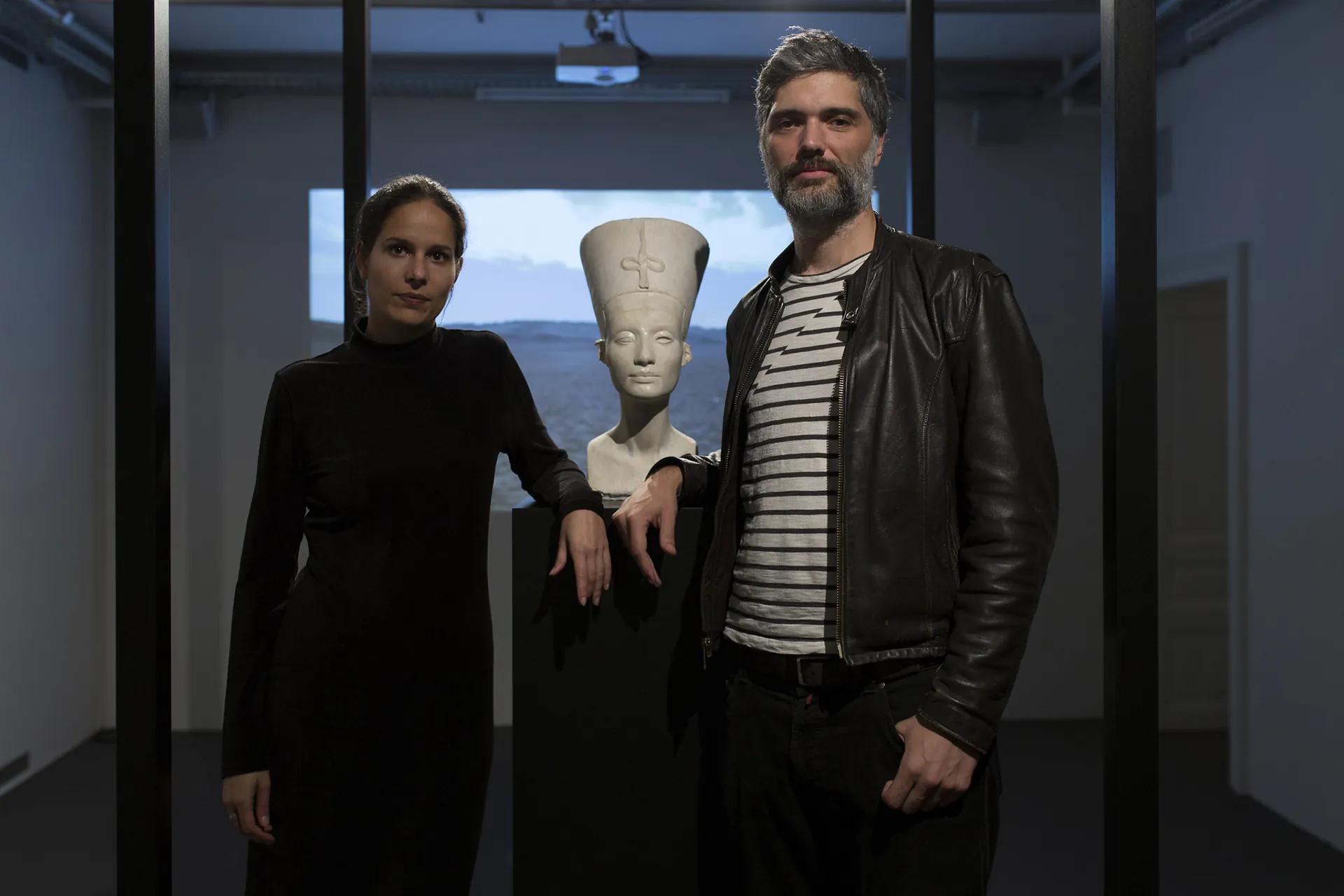
Nora Al-Badri & Jan Nikolai Nelles with “The Other Nefertiti” 3D printed bust. Image courtesy of Aksioma.
The original Nefertiti statue, created around 1345 BC, remains outside Egypt because German archaeologists took it over a century ago, kept it in Germany, and sparked ongoing disputes about its rightful place. For the artists, displaying the 3D printed Nefertiti in Cairo symbolized the artifact’s return, challenging established views on cultural ownership and museum practices. Although the 3D printed bust was described as a data hack or an art heist at the time, it brought to light the debate over where such important artifacts belong while also showing how 3D technology can transform our connection with historical heritage. Al-Badri and Nelles, through their art, highlighted the problematic history of acquiring artifacts during colonial times and demonstrated how digital technology could open up access to these historical treasures for everyone.
After the exhibition, the artists took yet another step to continue their commentary on cultural heritage and archaeology: “After the exhibition our artistic undertaking was an open end: we buried the 3D print in the desert in the outskirts of Cairo as a counter-act to the excavation. We delivered it back to the desert as a space, but the coordinates won’t be revealed.”
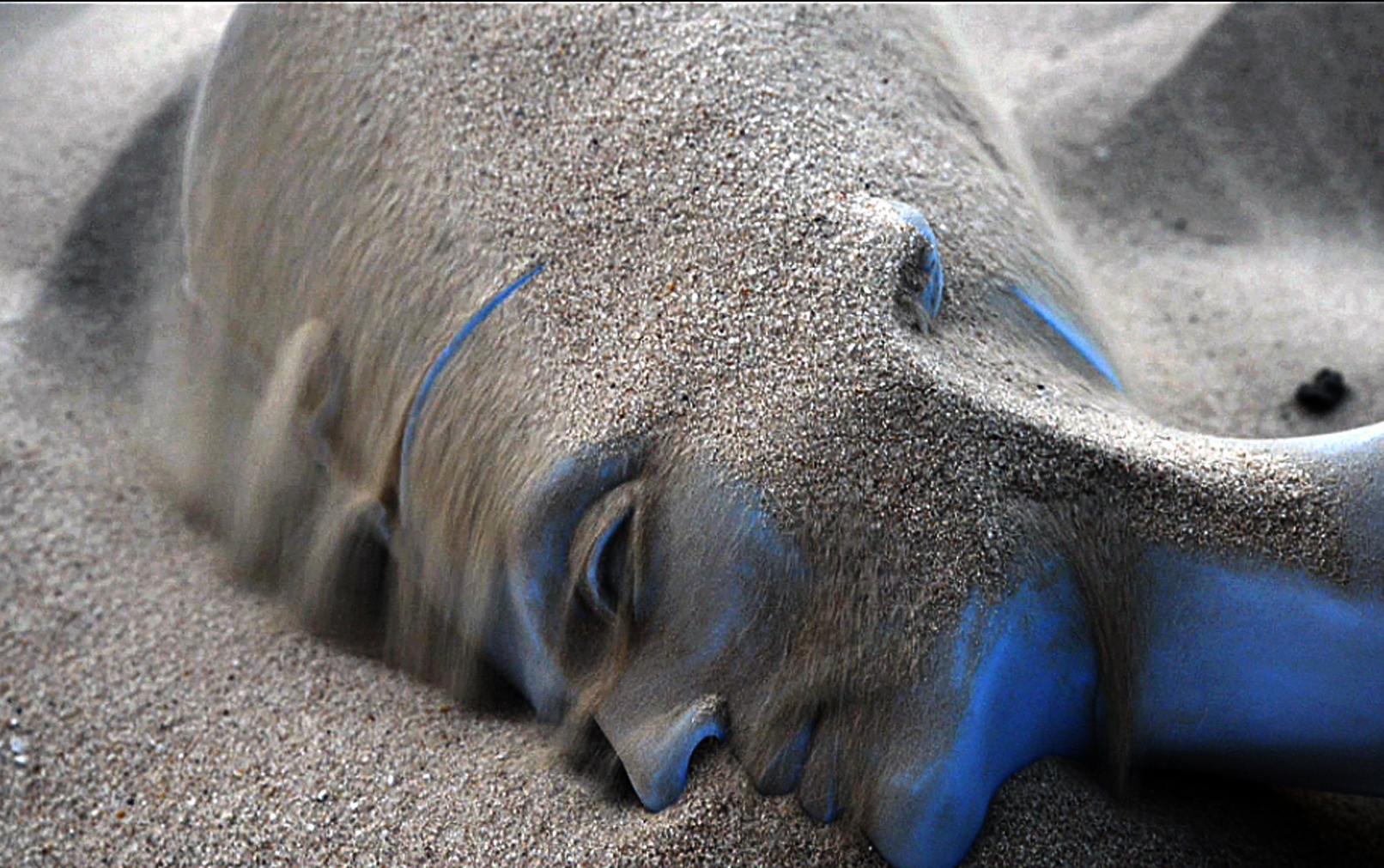
Desert burial of “The Other Nefertiti” 3D printed bust. Image courtesy of Pavillion for Venice Architectural Biennale.
In the past decade, 3D printing and scanning have not just changed how we see history; they’ve brought it to life in our hands. From the sands of Iraq to the streets of Paris, from the depths of the Baltic to the banks of the Nile, these stories of 3D printing are just a small sample of how technology bridges time. Each project, whether it’s giving a face to someone who was forgotten or returning a treasure home, brings a piece of the past into the present. Humanity can preserve history through the fusion of art, science, and technology, ensuring that these stories and the lessons they carry are not lost to time.
Subscribe to Our Email Newsletter
Stay up-to-date on all the latest news from the 3D printing industry and receive information and offers from third party vendors.
Print Services
Upload your 3D Models and get them printed quickly and efficiently.
You May Also Like
Heating Up: 3D Systems’ Scott Green Discusses 3D Printing’s Potential in the Data Center Industry
The relentless rise of NVIDIA, the steadily increasing pledges of major private and public investments in national infrastructure projects around the world, and the general cultural obsession with AI have...
Formlabs Teams Up with DMG MORI in Japan
In late June, Nick Graham, Chief Revenue Officer at Formlabs, announced on LinkedIn that the company had partnered with DMG MORI, one of the world’s leading machine tool companies, to...
EOS in India: AM’s Rising Star
EOS is doubling down on India. With a growing base of aerospace startups, new government policies, and a massive engineering workforce, India is quickly becoming one of the most important...
3D Printing News Briefs, June 25, 2025: R&D Materials, 3D Printed Veneers, & More
In today’s 3D Printing News Briefs, 3DXTECH has launched a program that gives customers early access to experimental materials, and the first Lithoz CeraFab Multi 2M30 in the Czech Republic...


